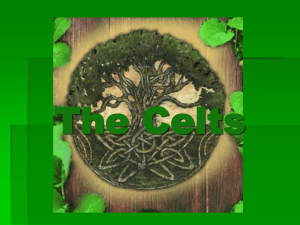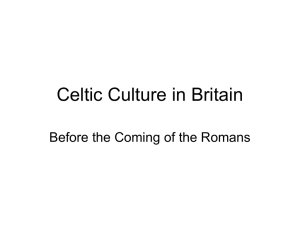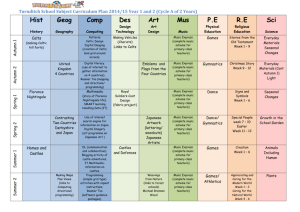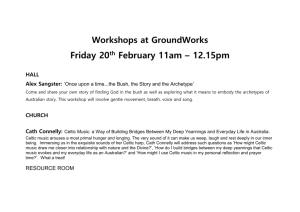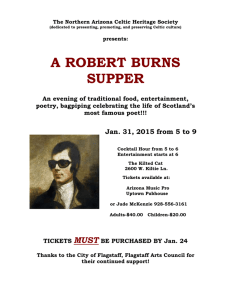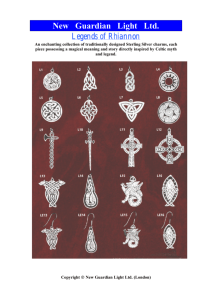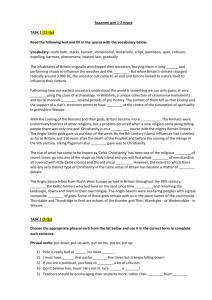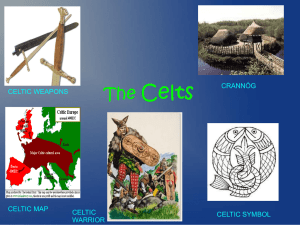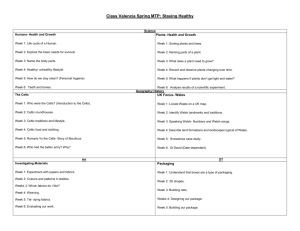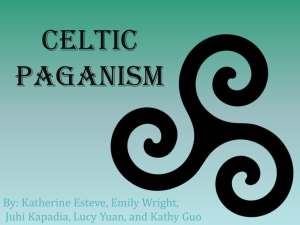Celtic Gods - Mythic Journeys
advertisement
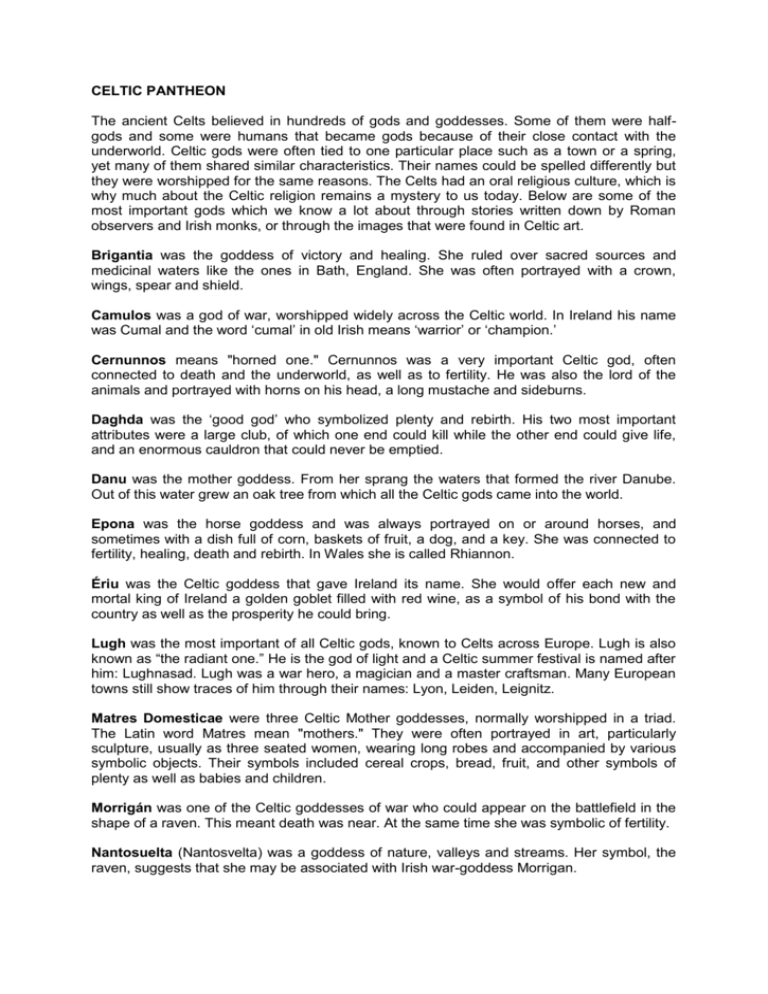
CELTIC PANTHEON The ancient Celts believed in hundreds of gods and goddesses. Some of them were halfgods and some were humans that became gods because of their close contact with the underworld. Celtic gods were often tied to one particular place such as a town or a spring, yet many of them shared similar characteristics. Their names could be spelled differently but they were worshipped for the same reasons. The Celts had an oral religious culture, which is why much about the Celtic religion remains a mystery to us today. Below are some of the most important gods which we know a lot about through stories written down by Roman observers and Irish monks, or through the images that were found in Celtic art. Brigantia was the goddess of victory and healing. She ruled over sacred sources and medicinal waters like the ones in Bath, England. She was often portrayed with a crown, wings, spear and shield. Camulos was a god of war, worshipped widely across the Celtic world. In Ireland his name was Cumal and the word ‘cumal’ in old Irish means ‘warrior’ or ‘champion.’ Cernunnos means "horned one." Cernunnos was a very important Celtic god, often connected to death and the underworld, as well as to fertility. He was also the lord of the animals and portrayed with horns on his head, a long mustache and sideburns. Daghda was the ‘good god’ who symbolized plenty and rebirth. His two most important attributes were a large club, of which one end could kill while the other end could give life, and an enormous cauldron that could never be emptied. Danu was the mother goddess. From her sprang the waters that formed the river Danube. Out of this water grew an oak tree from which all the Celtic gods came into the world. Epona was the horse goddess and was always portrayed on or around horses, and sometimes with a dish full of corn, baskets of fruit, a dog, and a key. She was connected to fertility, healing, death and rebirth. In Wales she is called Rhiannon. Ériu was the Celtic goddess that gave Ireland its name. She would offer each new and mortal king of Ireland a golden goblet filled with red wine, as a symbol of his bond with the country as well as the prosperity he could bring. Lugh was the most important of all Celtic gods, known to Celts across Europe. Lugh is also known as “the radiant one.” He is the god of light and a Celtic summer festival is named after him: Lughnasad. Lugh was a war hero, a magician and a master craftsman. Many European towns still show traces of him through their names: Lyon, Leiden, Leignitz. Matres Domesticae were three Celtic Mother goddesses, normally worshipped in a triad. The Latin word Matres mean "mothers." They were often portrayed in art, particularly sculpture, usually as three seated women, wearing long robes and accompanied by various symbolic objects. Their symbols included cereal crops, bread, fruit, and other symbols of plenty as well as babies and children. Morrigán was one of the Celtic goddesses of war who could appear on the battlefield in the shape of a raven. This meant death was near. At the same time she was symbolic of fertility. Nantosuelta (Nantosvelta) was a goddess of nature, valleys and streams. Her symbol, the raven, suggests that she may be associated with Irish war-goddess Morrigan. Nuadu was the king of the Tuatha Dé’, children of Danu. He lost his arm in a battle but another god made him a new one made of silver. His name can also mean ‘cloud maker,’ indicating that he was also a weather god. Ogmia (Sun face) was a hero god, who had gold chains that hung from his tongue and attached to the ears of his followers. He is the patron god of scholars and eloquence. Ogmia invented the runic language of the Druids. He is represented as an old man, with a bald head, and dressed in a lion skin. Sucellus was a Celtic hammer god usually portrayed as an older bearded man with a longhandled hammer. He was the guardian of forests and the patron of agriculture and is often shown with the goddess Nanotsuelta. Sucellus and Nanosuelta are often accompanied by other symbols such as barrels, pots, dogs and ravens. That’s why we believe that they were associated with beneficence, domesticity and prosperity. The hammer may denote a connection with thunder, rain and fertility. Taranis was the god of thunder, worshipped by Celts under different names across the Continent and the British Isles.
